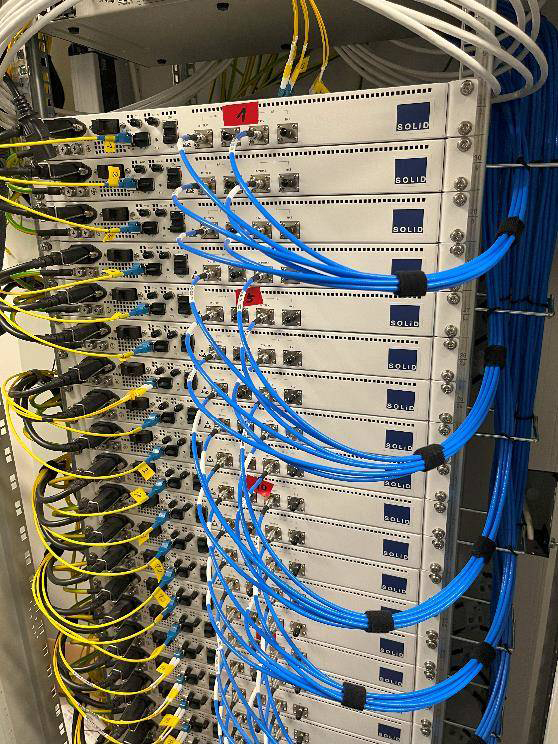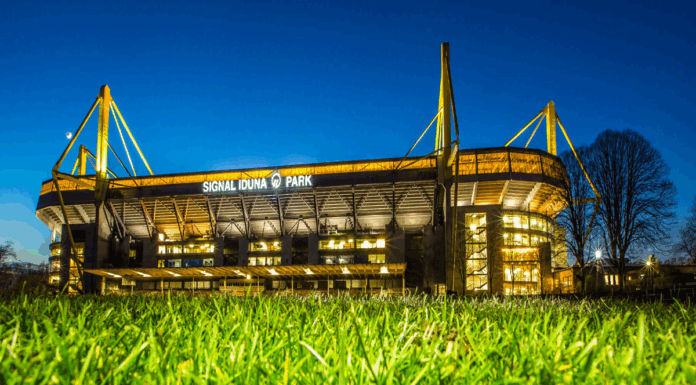Converging 5G Open RAN with neutral-host DAS offers a promising path for better indoor coverage, but what does such a deployment look like practically?
As 5G adoption continues to escalate worldwide, communications service providers (CSPs) are trying to strike a balance between expanding their networks and boosting profitability. This dilemma is driving increased scrutiny on how to improve the efficiency of network deployment and management to keep costs as low as possible without impacting performance. For a number of CSPs, the key to achieving that goal is the transition to Open RAN architectures throughout their wide-area network (WAN).
Yet, with roughly 80 percent of mobile traffic occurring indoors, the challenge of reaching more subscribers extends well beyond the typical outdoor network deployment. For example, consider the case of a large sports stadium where thousands of fans expect 5G connectivity to upload multimedia, download stats, post social media and make video calls. Game day brings a massive surge in capacity demand, and every mobile customer in every seat throughout the stadium expects their service provider to deliver a huge victory.
One promising approach to improving in-building connectivity is the convergence of Open RAN 5G architectures with neutral-host distributed antenna system (DAS) networks. But what does that type of deployment really look like in practical terms, and what does it mean for CSPs?
A changing playing field
As mobile technology evolution transforms the way that networks are built and managed, this transformation also affects how CSP networks interact with in-building wireless equipment. With increasing adoption of open architectures and O-RAN ALLIANCE standards, CSPs have the opportunity to streamline convergence between their WAN and in-building networks. This integration enables increased capacity, coverage and reliability indoors — a particularly attractive business case given that interest in private 5G networks is seeing a resurgence.
The integration of an O-RAN signal source with a neutral-host DAS platform can substantially reduce the power consumption and space requirements of the DAS equipment, while also simplifying and accelerating network deployment. As a result, the overall total cost of ownership (TCO) of the mobile network is significantly less, helping the CSP boost profitability and return on investment (ROI) while increasing agility for faster delivery of new services.
Boosting the fan experience
A case in point is a recent DAS deployment in Germany’s largest European football stadium. Located in Dortmund, Germany, Signal lduna Park is capable of hosting up to 82,000 fans. The sixth largest in Europe, the stadium holds the European average attendance record set during the 2011-12 season with 1.37 million fans over just 17 games. Signal lduna Park also includes the largest terrace for standing spectators in European football with a capacity of 24,454 fans.
In advance of the stadium’s 50th anniversary in 2024, Signal Iduna Park underwent an ambitious upgrade project to ensure sufficient mobile coverage and capacity for the ultimate fan experience. However, stadiums such as Signal lduna Park provide a unique set of challenges when it comes to providing seamless connectivity throughout all the indoor areas and extending to the seating and outdoor terraces.

With massive data traffic surges during an event, the mobile network can become inundated, throttling throughput capacity. Not only does this diminish the experience for sports fans, but they are not the only users on the network. Staff and emergency personnel also require sufficient capacity and reliable connectivity to securely take electronic payments, validate E-tickets and conduct mission-critical communications for public safety services.
To provide a network powerful enough to support tens of thousands of users with a variety of needs — from voice traffic to live streaming video — the in-building deployment comprised the latest digital DAS equipment. The DAS provides LTE and 5G connectivity supporting all four of Germany’s main network service providers. With multi-beam antennas and more than 150 slim, unobtrusive remote radio units located at strategic points throughout the stadium, the neutral-host DAS delivers high-speed 5G / LTE coverage across multiple network sectors.
Careful design, deployment and optimization of the in-building network was vital to ensure plenty of capacity without creating signal interference. This involved medium-power radios to cover 30 network sectors within the stadium bowl and stands, low-power radios for an additional four sectors within the indoor spaces and VIP lounges, and high-power radios in the two sectors covering the stadium’s entrances and parking areas.
Open to a new playbook
Beyond providing seamless in-building connectivity, another goal for this project was to do so as sustainably, efficiently and affordably as possible. To that end, leading CSP 1&1 Telecommunications opted to create the world’s first 5G Open RAN stadium network. The Open RAN deployment pairs RAN architecture from Rakuten Symphony with third-party central unit (CU) and distributed unit (DU) baseband solutions, and interfaces with the DAS platform via an O-RAN signal source unit, enabling seamless interoperability between the multi-vendor hardware and software.
Moreover, the Open RAN configuration offered a drastically reduced footprint, requiring two rack units for 1&1 Telecommunications, versus 300 square feet for each of the other three operators’ base station equipment. In addition to saving space, the Open RAN configuration greatly reduces thermal load, power consumption, hardware and maintenance costs and overall TCO. With a nominal power budget of just 17 kW for the Open RAN DAS head-end and transmission, this represents a power reduction of between 51 and 76 percent for a single network operator, versus the other three CSP deployments.
As mobile network technology continues to evolve, this type of converged Open RAN and DAS architecture will provide a smooth transition to the next generation, such as RAN sharing models like multi-operator RAN (MORAN) or multi-operator core network (MOCN) infrastructure. In fact, a recent U.S. National Telecommunications and Information Administration (NTIA) grant was awarded to advance MORAN signal source development, enabling seamless Open RAN integration with neutral-host DAS infrastructures for diverse in-building configurations.
Going for the goal
With 5G connections projected to reach 8.3 billion worldwide by 2029, CSPs are challenged to speed up the pace of network expansion and enhancements even as they deal with shrinking profits, rising supply chain costs and growing network complexity. Further evaluation of Open RAN deployments and DAS convergence can help CSPs find innovative solutions to reduce TCO while increasing agility and performance for improved quality of service (QoS) and faster service delivery. In the case of Signal Iduna Park, 1&1 Telecommunications is well-positioned to do just that, delivering the ultimate fan experience to subscribers with a one-of-a-kind Open RAN stadium network.

